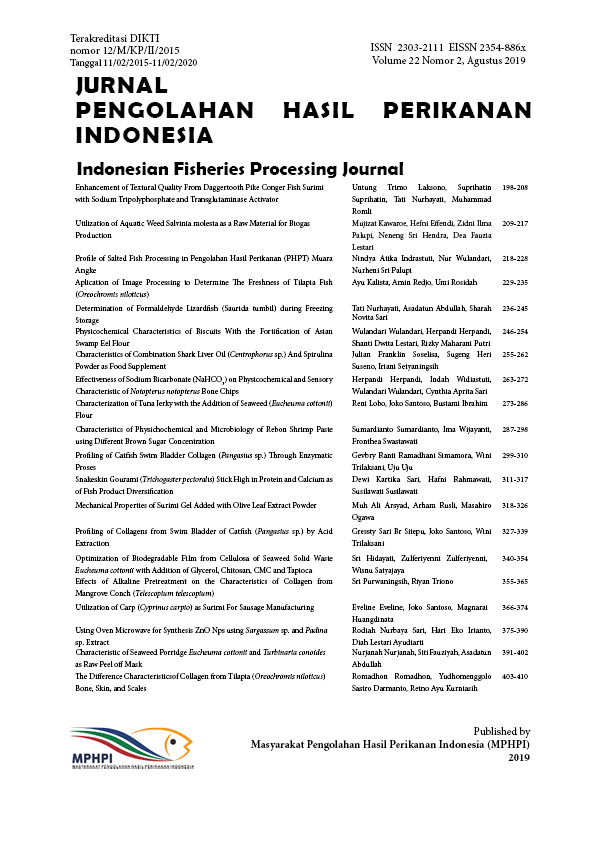Determination of Formaldehyde Lizardfish (Saurida tumbil) during Freezing Storage
Abstract
Formaldehyde (FA) in fish is formed as a result of fish quality decreasing, in particular the freshness of fish. The level of fish freshness can not be increased but maintained. Quality of fish can be maintained by proper handling processes, one of them is handling with low temperatures. The purpose of this study was to determine the formation process of FA lizardfish (Saurida tumbil) during freezing storage. The treatments applied were gutted and ungutted. Observations were made every 2 weeks for 22 weeks. The parameters measured were sensoric, pH, total volatile base (TVB), trimethylamine (TMA), formaldehyde (FA) and dimethylamine (DMA). The results obtained showed that FA formed after two weeks. Levels of FA formed in gutted lizardfish are 12.96 ppm and 17.77 ppm for ungutted. Formaldehyde (FA) formation occurs when the condition of the fish is still fresh with TVB content of below 20 mg N/100 g. Dimethylamine (DMA) levels when FA is formed of 7.99 ppm for gutted lizardfish and 5.50 ppm for ungutted. Formaldehyde (FA) formation also accompanied by the increation of other decay indicators.
Authors
NurhayatiT., AbdullahA., & SariS. N. (2019). Determination of Formaldehyde Lizardfish (Saurida tumbil) during Freezing Storage. Jurnal Pengolahan Hasil Perikanan Indonesia, 22(2), 236-245. https://doi.org/10.17844/jphpi.v22i2.27669

This work is licensed under a Creative Commons Attribution 4.0 International License.
Authors who publish with this journal agree to the following terms:
- Authors retain copyright and grant the journal right of first publication with the work simultaneously licensed under a Creative Commons Attribution License that allows others to share the work with an acknowledgement of the work's authorship and initial publication in this journal.
- Authors are able to enter into separate, additional contractual arrangements for the non-exclusive distribution of the journal's published version of the work (e.g., post it to an institutional repository or publish it in a book), with an acknowledgement of its initial publication in this journal.





